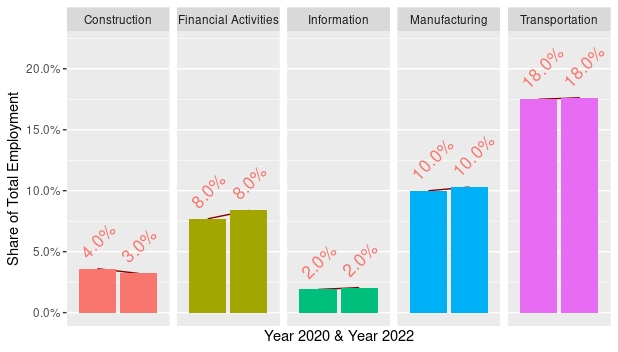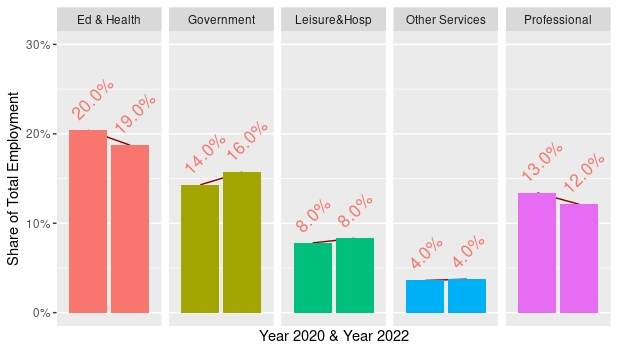There seems to be a deep well of anxiety triggers in Connecticut. We hear concerned talk parsing and attempting to understand what are, or will be, the cognitive impairments afflicting an entire generation of our youth by quarantine-associated remote-learning schooling. We hear hand-wringing over the lost momentum that has befallen our young athletes, dancers and others who imperfectly sustain their physical conditioning and experience in the current climate of seasonal shutdowns and shuttered theaters and dance studios.
To add to this disconcerting and troubling list we speculate that our entrepreneurial energy will be impaired permanently. This alone could have a more insidious generational impact than the distressing events we note above.
The belief that the service industry and our entrepreneurial drive will push us through to regain lost jobs, reclaim our lost vigor has to be tempered that we will - post-quarantine -be operating in the shadow of future lockdowns. And unless we demand clear guidelines, procedures, processes, legislation, to disarm the chilling, one-person capabilities to shut-down enterprise and livelihoods, any risk-taker will choose to withhold her efforts or plan for a less permanent version - and invest accordingly.
Is it possible to quantify - or even qualitatively appraise - the impact of this ominous cloud of arbitrariness hanging over our future? The closest we can approximate the realization is within the regulatory "takings" literature. A regulatory taking is a commandeering of private property by the state. And the appropriation of property is a matter of such concern to individuals in a free, market society that it warrants its own constitutional protections and associated jurisprudence. Viewed in this light, a any future mandated shutdown can be considered a taking.
To establish a baseline we deploy a simple method to project Connecticut employment into the near future. Problematically: we are living unprecedented times - and any forecast attempt, especially those who seek patterns in past data are likely to err. The depth of our economic distress and the manifold, massive uncertainty ahead of us is idiosyncratic, an event unlike none before.
Nevertheless, examining our fortunes through past recoveries can provide clues as to how we will fare in this coming one. We use a simple Markov model for this exercise.
A Markov Look at the Next Two Years
We look to infer our future performance in recovering from the quarantine-induced recession from our performance in recovering from the great recession that ended in 2009. Specifically, we calculate the transition matrix based on the change in employment levels by sector from 2009 into 2010. Table 1 displays the employment data in terms of sector share of total employment.
We then use the estimate transition matrix to establish the change in employment over a two-year horizon. As baseline for the estimate we use comparable employment level by sector in 2020. Figures 1 and 2 show the two-year change in employment share by sector.
Figure 1
Connecticut Employment Share of Total by Sector

What does the projections tell us? To the extent that we repeat our 2009-2010 performance with the same vigor and determination, we can anticipate a disheartening outcome. But for Government, employment shares remains flat over the horizon at best - with some sectors declining.
Figure 2
Connecticut Employment Share of Total by Sector

A simple model is sometimes a compelling model. We chose a markov chain because of it is unique in the sense that it has no memory but for the immediately prior period. The probabilities in the transition from year to year depend only on the conditions today.
The projected change in employment shares can serve as the starting point to which we apply a discount to account for the chilling economic effect of continued functioning under the cloud of another unforeseen shutdown. For example, if we assume the employment will be impaired by a full one percent equally dispersed across all sectors then it effectively means we should brace for a generalized negative growth in employment. To be sure, the Government sector still promises some growth - but that cannot be the basis for a sustainable future for Connecticut.
The one thing that is within our reach is to rebut the shadow hanging over the state. To call for legislation designed to provide careful guidance based on sound cost-benefit analysis as the foundation for any future developments.
Data Appendix
Total Employment by Sector
Table 2
| Sector | 2009 | 2010 | 2020 |
|---|---|---|---|
| Construction | 54625 | 49908 | 57000 |
| Manufacturing | 168400 | 162792 | 156708 |
| Transportation | 288183 | 285217 | 274567 |
| Information | 34392 | 31800 | 29833 |
| Financial Actitivies | 137592 | 135200 | 120367 |
| Professional & Business | 194842 | 194833 | 210958 |
| Education & Health Services | 302250 | 396900 | 321708 |
| Leisure & Hospital | 133658 | 133575 | 122025 |
| Other Services | 61242 | 60525 | 55925 |
| Government | 254650 | 250642 | 224258 |
| Total | 1629833 | 1611392 | 1573350 |